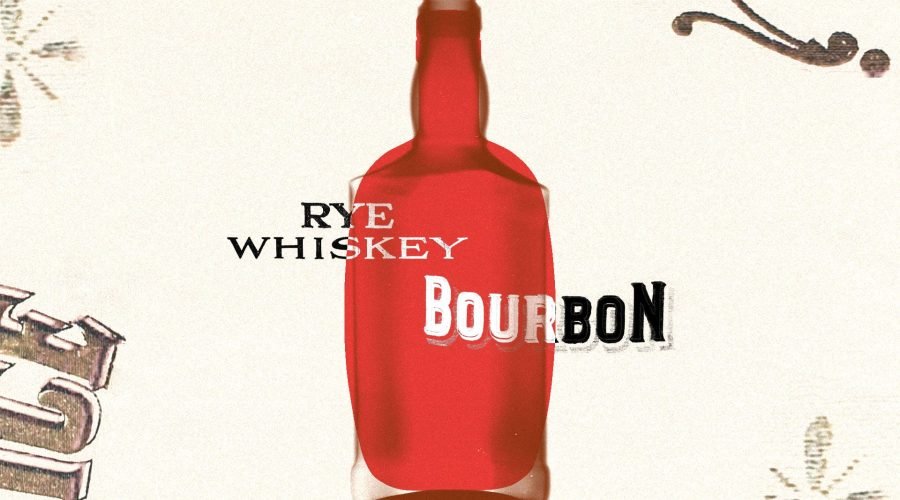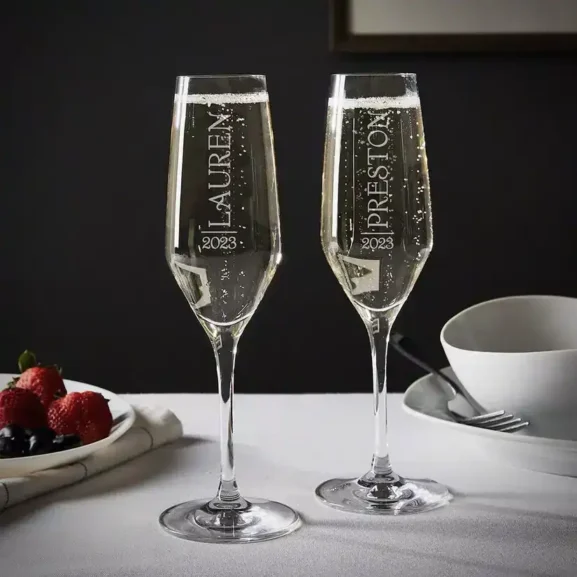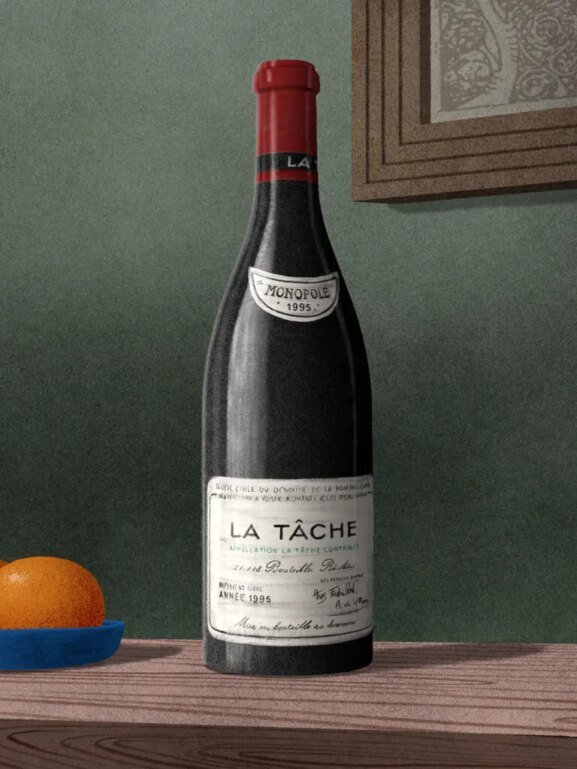Rye vs. Bourbon: What’s the Difference?
Among the wide range of whiskeys, bourbon and rye are among the most popular options. They look similar, are often used in the same cocktails and many American distilleries make both types of whiskey. No wonder it’s so easy to get them confused.
“Bourbon and rye actually have a lot in common,” explains Adam Polonski, co-founder of independent bottler Lost Lantern. “Beyond the basic difference in grain type, the requirements for bourbon and rye are basically the same. Most importantly, both must be aged in a new oak barrel.”
So, what differentiates the two from one another? Let us enlighten you. Below we’ve compiled a complete guide on everything you need to know about the similarities and differences between bourbon and rye—and the best ones to drink right now.
In the shop
Wine Enthusiast Three-In-One Stacking Decanter & Whiskey Glasses Set
In Stock | $19.99
The Grains
The most important distinction between rye and bourbon comes down to the mash bill, or the recipe of grains. Bourbon is made using at least 51% corn, while rye whiskey includes at least 51% rye grain.
“When it comes to flavor, bourbon and rye can be quite distinct,” Polonski says. “The differences in grain lead to a big difference in flavor!”
In general, bourbon’s high corn content means a slightly sweeter sip, while rye tends to be drier and includes a fair amount of baking spice. In bourbon, Polonski often finds notes of vanilla, caramel, chocolate, fruit (especially citrus) and oak, depending on how long the spirit is aged.
By comparison, “rye whiskies tend to be spicier and less sweet, and often have herbal and grassy notes,” he says. “Minty flavors (peppermint, spearmint, etc.) are also extremely common. Like bourbons, they also often have oak notes, which become more pronounced with age.”
Where It’s Made
This is another important difference. Bourbon is always American-made, while rye can be made anywhere. That said, America turns out plenty of rye whiskey, and most of the time, “rye whiskey” is shorthand for American rye whiskey.
Rye produced in other countries can’t be labeled as “American rye.” Canada, in particular, has a long history making whisky (with no “e”) that includes rye.
“Canada was settled about a century after America, and immigration patterns differed,” explains Davin de Kergommeaux in his book Canadian Whisky: The Essential Portable Expert. Specifically, early 19th-century Dutch and German immigrants added rye, a hardy grain that thrived in the cooler northern climate, to whisky mashes. “To distinguish this new liquor from ‘common whisky’—that is, whisky made without any rye grain—the rye-flavored variety quickly acquired the nickname ‘rye.’”
Soon, rye-based whisky was so prevalent in Canada that for decades, all Canadian whisky was referred to simply as “rye.” Today, corn is now the most commonly used grain in Canadian whisky, except for a handful of rye-focused bottlings.
Got it? Now that you’ve got a handle on the differences between these popular North American whiskeys (and whiskies!), let’s take a look at the best examples of specific styles. Plus, we’ve answered some frequently asked questions at the end.

In the shop
Personalized Barrel Whiskey Bootleg Kit
In Stock | $99.95
The Top Bourbons and Ryes to Try Right Now
Best High-Rye: High n’ Wicked Bourbon

This super-high-rye bourbon is complex and enticing. Mellow toffee and oak aromas lead into a silky but spicy palate. Sarsaparilla, allspice, nutmeg and clove surround a faint ripple of butterscotch. The relatively dry finish offers hints of cedar, roasted grain and cigar tobacco. 95 Points—Kara Newman
$97
Total Wine
Best Beer-Bourbon Crossover: Dragon’s Milk Beer Barrel Bourbon

Finished in Dragon’s Milk Stout barrels, this bold bourbon opens with a distinct hoppy aroma, mingled with subtle fresh apple and almond. The lively palate echoes that hoppy note, focusing it on a roasty, malty backbone that is accented with a hint of cocoa nibs. Juicy Granny Smith apple and grapefruit-peel astringency make the mouth water, creating an effect that’s light and refreshing. A hint of ginger crackles on the finish. Best Buy. 95 Points—K.N.
$30
Caskers
Best Bottled-in-Bond: Old Fitzgerald 11 Years Old Bourbon

Concentrated caramel tinged with toffee and espresso leads the nose. The bold palate offers more of the same, though a splash of water adjusts the flavor to a more dry, leathery tone, finishing long with ginger, black pepper and tobacco highlights. Bottled in Bond. Fall 2021 Edition. 97 Points—K.N.
$848
Caskers
Best Blended: Barrell Bourbon Batch #035

This is a mix of straight bourbons from Tennessee, Kentucky and Indiana, ranging in age from six to 13 years old. The end result is a mix of rich caramel and toffee on nose and palate. Each sip opens relatively dry, with oak and hints of espresso and dark chocolate, but finishes long and luxe, showing mocha tinged with hazelnut and a final burst of fiery ginger heat. 96 Points—K.N.
$95
Wine.com
Best Canadian: Lot No. 40 Canadian Rye Whiskey

This full-bodied blended whisky hits all the right notes, starting with plenty of rich caramel and oak tones on the nose and palate, plus touches of butterscotch, spicy cinnamon and clove. It finishes long, slightly oily and mouthfilling. Sip it straight or add a splash of sweet vermouth. 97 Points—K.N.
$40
Caskers
Best Unexpected: Stauning Rye
It’s not American nor Canadian—it’s from Denmark!

Complex and delicious, this deep-flavored rye opens with espresso, dark chocolate, and hints of campfire smoke and barrel char. The finish long, toasty and warming, spiced with allspice, clove and caraway. It’s a bit like a s’more made on slices of dark-toasted rye bread. 97 Points—K.N.
$78
Caskers
Best Locavore: Whistlepig FarmStock Beyond Bonded Rye

This whiskey is made with 100% rye grain harvested from Whistlepig’s Vermont farm, the grain-to-glass rye the producer has been working toward for years. Happily, it was worth the wait. Look for concentrated toffee and oak aromas. Toasted grain leads the expressive palate, framed by hints of roasted coffee beans, honeycomb and vanilla, leading into a drying finish accented with lemon peel zing and baking spice. 94 Points—K.N.
$400
Hurley Wine Market
FAQ
Is Rye Spicier than Bourbon?
Not always, Altamar Brands Director of Education Brandon Cummins says, but “nine times out of 10, the rye whiskey will appear slightly spicier than bourbon.” Further, that perception can vary based on the barrel used (some contribute more spice notes than others), where and how it’s aged, and how the final liquid is blended.
Rye whiskies that incorporate more rye in the mash bill—such as those made with 95% rye and 5% malted barley—will seem much spicier than rye whiskies of the same age made from, say, 51% rye and a lot of corn.
Be mindful, however, that although “spicy” is a common descriptor, it doesn’t always mean “fiery,” like chile pepper heat. Often it indicates a surplus of baking spice flavors, like cinnamon, allspice or clove.
What Is High-Rye Bourbon?
Beyond the 51% grain requirement (51% corn for bourbon, 51% rye for rye whiskey), the remaining 49% can include a wide range of other grains. That might be still more corn or rye, or grains like wheat (see: wheated bourbons), oats or barley. Distillers often adjust these recipes to add complexity or fine-tune the flavor profile.
“Generally speaking, high-rye bourbon is one that has more than 20% rye in its mash bill,” says Cummins. “That rye acts as a great counterbalance to corn, which is nicely sweet, and adds spice character.”
Is Bourbon or Rye Better for an Old Fashioned?
Which whiskey to select for a cocktail is a matter of personal preference, says John “Fitzy” Fitzpatrick, beverage director and self-described “spiritual advisor” at Warren American Whiskey Kitchen in Delray Beach, Florida, which offers 1000-plus whiskey bottlings.
However, he traditionally reaches for a “deep, caramel-rich” bourbon to fill out an Old Fashioned, and rye for a Manhattan. The latter “introduces sweet vermouth, which would be the complement to spice.” That said, Fitzpatrick recommends that people try both in mixing drinks, to see which they prefer. “There’s no right or wrong with either cocktail,” he says.

In the shop
Hyde Unbreakable Old Fashioned Glass
In Stock | $36
The post Rye vs. Bourbon: What’s the Difference? appeared first on Wine Enthusiast.


